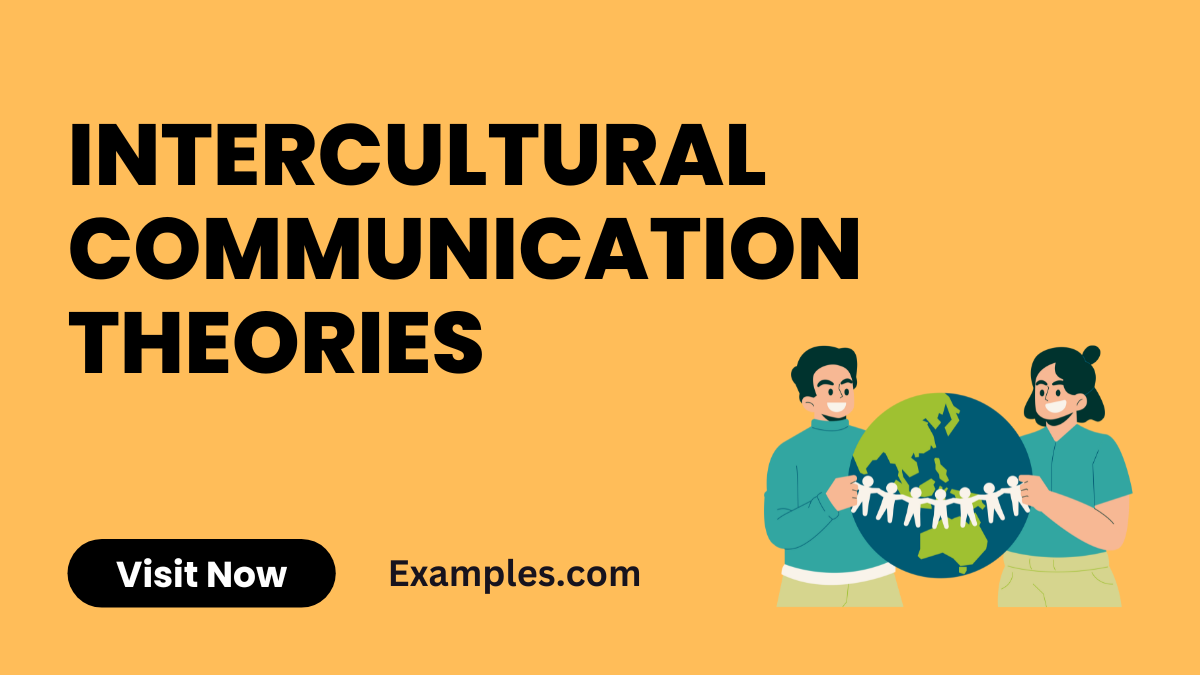19+ Intercultural Communication Theories Examples
Intercultural Communication Theories provide a comprehensive understanding of how communication varies across different cultures. These theories are essential in today’s globalized world, where interactions among diverse cultural groups are common. Understanding these theories can significantly improve communication effectiveness, reduce misunderstandings, and foster mutual respect. This guide delves into various intercultural communication theories, offering insights on their application and practical tips to enhance communication skills in a culturally diverse environment.
List of Intercultural Communication Theories

Intercultural Communication Theories offer vital insights into the dynamics of interactions across different cultures. These theories provide frameworks for understanding how cultural backgrounds influence communication styles, perceptions, and behaviors. They are essential for anyone looking to navigate the complex landscape of global interactions effectively, whether in business, education, healthcare, or social settings. Each theory presents unique perspectives and strategies for enhancing communication and building cross-cultural understanding.
- Hofstede’s Cultural Dimensions Theory: Examines how values in the workplace are influenced by culture.
“Hofstede’s theory helped me understand the importance of individualism versus collectivism in our international office.” - Hall’s High Context and Low Context Cultures: Differentiates cultures based on how much communication is explicit.
“In high-context cultures, I learned to read between the lines more than the actual words spoken.” - Trompenaars’ Model of National Culture Differences: Analyzes how different cultures resolve conflicts and organize relationships.
“Trompenaars’ model clarified why our partners emphasize hierarchical relationships.” - Meyer’s Culture Map: Explores eight scales that affect how people think, lead, and get things done across cultures.
“Meyer’s Culture Map showed me the varied approaches to feedback in different cultures.” - GLOBE Study: Investigates the impact of culture on leadership effectiveness and organizational success.
“The GLOBE study’s findings helped me adapt my leadership style to various cultural settings.” - Communication Accommodation Theory: Describes how people adapt their communication to be more like or unlike others.
“I use Communication Accommodation Theory to adjust my speaking style when talking to international clients.” - Anxiety/Uncertainty Management Theory: Focuses on how uncertainty and anxiety affect intercultural interactions.
“This theory helped me understand the role of anxiety in learning new cultures.” - Face-Negotiation Theory: Examines how people from different cultures manage conflict negotiation.
“Face-Negotiation Theory guided me in handling a dispute with a colleague from a different cultural background.” - Social Identity Theory: Looks at how group membership affects self-identity and group behavior.
“Social Identity Theory explained the in-group dynamics I observed in multicultural teams.” - Sapir-Whorf Hypothesis: Suggests that the structure of a language affects its speakers’ worldview.
“The Sapir-Whorf Hypothesis made me more aware of how language shapes my perception.” - Intercultural Pragmatics: Studies how context and culture affect language use and understanding.
“Intercultural Pragmatics taught me the importance of context in cross-cultural communication.” - Adaptive Structuration Theory: Looks at how social structures are produced and reproduced in social systems.
“Adaptive Structuration Theory helped me understand organizational change in a multinational company.” - Cultural Fusion Theory: Discusses the blending of cultural elements in increasingly globalized societies.
“Cultural Fusion Theory is relevant in understanding our diverse, multicultural workplace.” - Intercultural Adaptation Theory: Explores how individuals adapt to new cultural environments.
“Using Intercultural Adaptation Theory, I better managed my transition to living abroad.” - Bennett’s Developmental Model of Intercultural Sensitivity: Describes the stages of sensitivity to cultural differences.
“Bennett’s model helped me progress from cultural denial to integration.” - Contextual Model of Intercultural Communication: Assesses the role of context (social, environmental, historical) in intercultural communication.
“This model made me consider historical contexts in my cross-cultural interactions.” - Kim’s Integrative Theory of Cross-Cultural Adaptation: Focuses on how immigrants adapt to a new culture.
“Kim’s theory was instrumental in understanding the adaptation process of our new employees from abroad.” - Stella Ting-Toomey’s Identity Negotiation Theory: Discusses how cultural identity impacts intercultural interactions.
“Identity Negotiation Theory helped me navigate identity issues in diverse settings.” - Intercultural Communication Competence Model: Explores the abilities needed to effectively communicate in intercultural situations.
“This model guided me in developing the skills necessary for effective intercultural communication.” - Systemic Functional Linguistics in Intercultural Communication: Examines language in social context, focusing on choices in meaning and structure.
“Systemic Functional Linguistics gave me insights into the complexities of language use in different cultures.”
These theories collectively provide a comprehensive understanding of the nuances of Intercultural Communication, offering valuable guidelines for effective and respectful interactions across cultures.
Intercultural Communication Theories offer crucial insights into navigating the complexities of global interactions. This guide has explored various theories, each providing unique perspectives on understanding and bridging cultural differences. These theories are indispensable for anyone seeking to enhance their intercultural communication skills, fostering not only effective but also respectful and empathetic interactions in an increasingly interconnected world.



